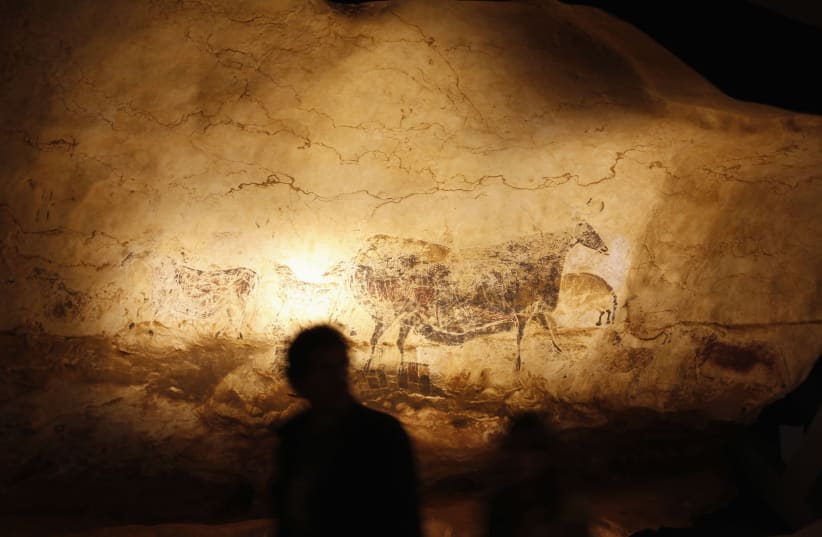Ice Age families may have been sitting huddled together after dinner in front of a flickering “screen” both for warmth and entertainment long before Netflix and Disney+ came along, a recent study by British archaeologists suggests.
Using modern technology to analyze 15,000-year-old limestone plaquettes–a kind of “portable art” carved into a stone with a surface flat enough to allow engraving–the researchers discovered that their geometric shapes and images of animals, humans and environmental elements such as rivers, were amazingly transformed into flickering animated scenes seemingly moving across the stone’s surface when placed in a specific distance and order near a virtual firelight.
As reported in the journal PLOS One, based on signs of exposure to fire the researchers from the University of York believed the stone plaquettes had been placed near a fire or hearth. They created replicas of the plaquettes made from similar limestones and similar engravings, and together with a combination of innovative techniques including microscopy, 3D modeling, color enhancement, and a virtual reality fire set out to determine the effect of their placement on the images. Five experiments were designed and conducted under varying conditions including placement and lighting on the plaquettes. Based on a comparison of the pattern of heating which became visible on the replicas and original stones, the researchers determined what they believe would have been the positioning of the stones around an ancient hearth.
Stone plaquettes were a diverse artistic phenomenon in the Upper Palaeolithic period and are found mainly in Western Europe, with the highest concentration in France, Spain and Germany, said the researchers. The 50 plaquettes they analyzed were from a collection now housed in the British Museum discovered by French scientist/engineer and archaeologist Peccadeau de l’Isle in the mid-1860s in Montastruc, a Magdalenian rockshelter site in southern France. Like many similar prehistoric art-bearing sites excavated in the 19th and early 20th centuries there is limited archaeological context to his finds, said the researchers.
The Magdalenian culture was the last cultural period of Ice Age Europe and was characterized by its tools made from flint, bone and ivory as well as by its carvings and paintings
“The data generated suggests plaquettes from Montastruc were likely positioned in proximity to hearths during low ambient light conditions. The interaction of engraved stone and roving fire light made engraved forms appear dynamic and alive, suggesting this may have been important in their use,” wrote the researchers in their report while noting that the limited archaeological context restricts the conclusions which can be reached from their study.
However, other earlier studies including one by Fordham University Professor Edward Wachtel, and another by Palaeolithic researcher and film maker Marc Azéma and co-researcher Florent Rivère have also concluded that artistic scenes created during this time period broke down into movement producing an animated affect when exposed to flames or when images of animals were drawn on a spinning disc. They even went so far as to suggest that these flickering images from the end of the Ice Age represented the creation of the first cinematic images.
The first cinematic images
In their recent study, the British researchers noted that the limestone used in making the engraved stone plaquettes they studied reflected “careful and deliberate selection.” The most common animal portrayed on the stone carvings were horses, with 40 images way outnumbering the next numerous animals which were seven each of ibex and reindeer. Also depicted were red deer, bison, and one bird and one wolf, with some of the 76 animal forms on the plaquettes superimposed one over the other. Natural features of the limestone were purposefully integrated into some of the images as well, the researchers noted.
Sitting around the fire, watching the moving images created as the warming flames flickered on the stone plaquettes placed strategically around the hearth may have been part of an important active social nighttime activity for Magdalenian people, they said.
“Indeed, hearths can be social settings and the presence of plaquettes alongside objects used in daily life at Montastruc indicates they may have been used in these social contexts by the fireside,” the researchers concluded

